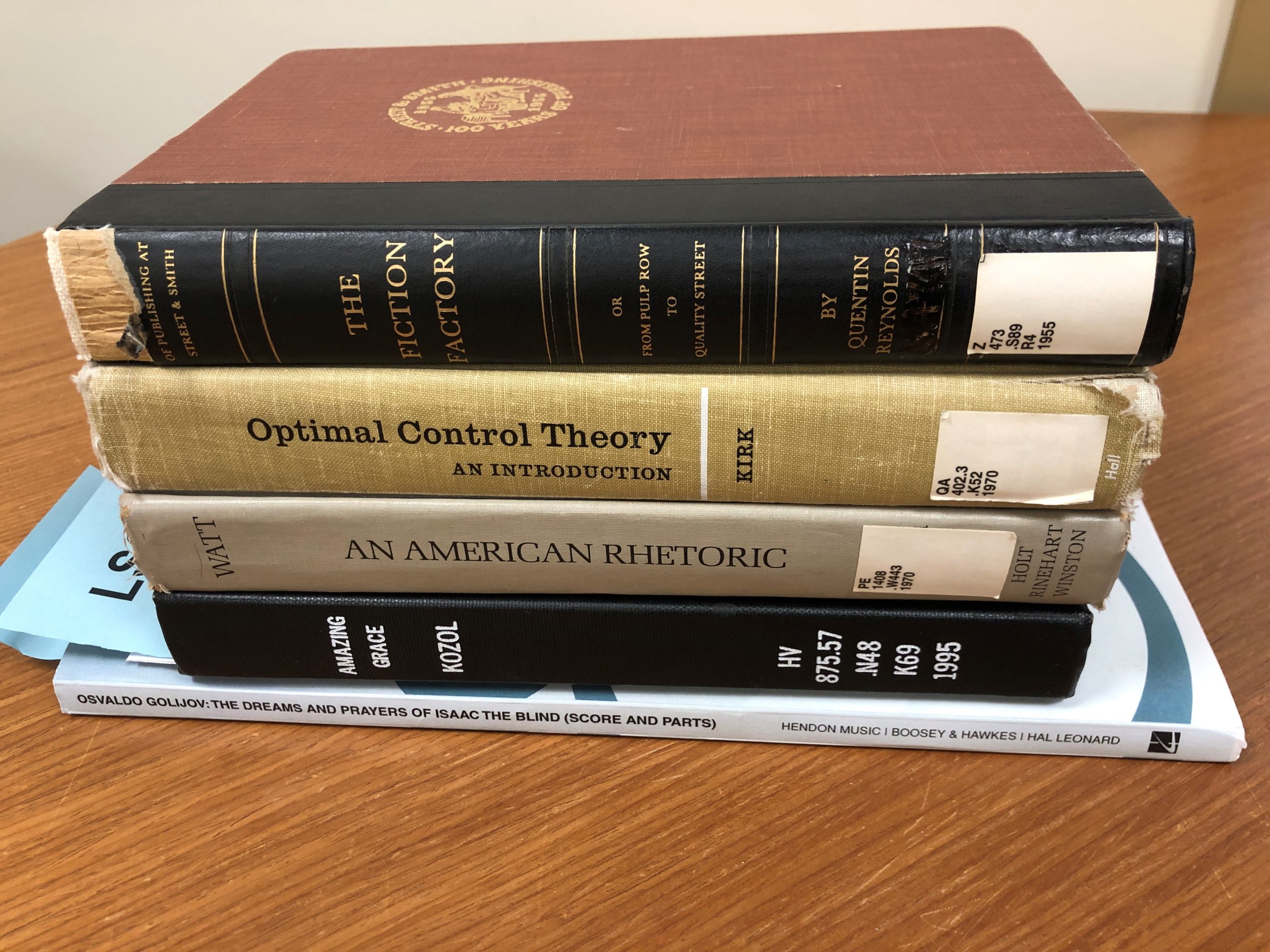
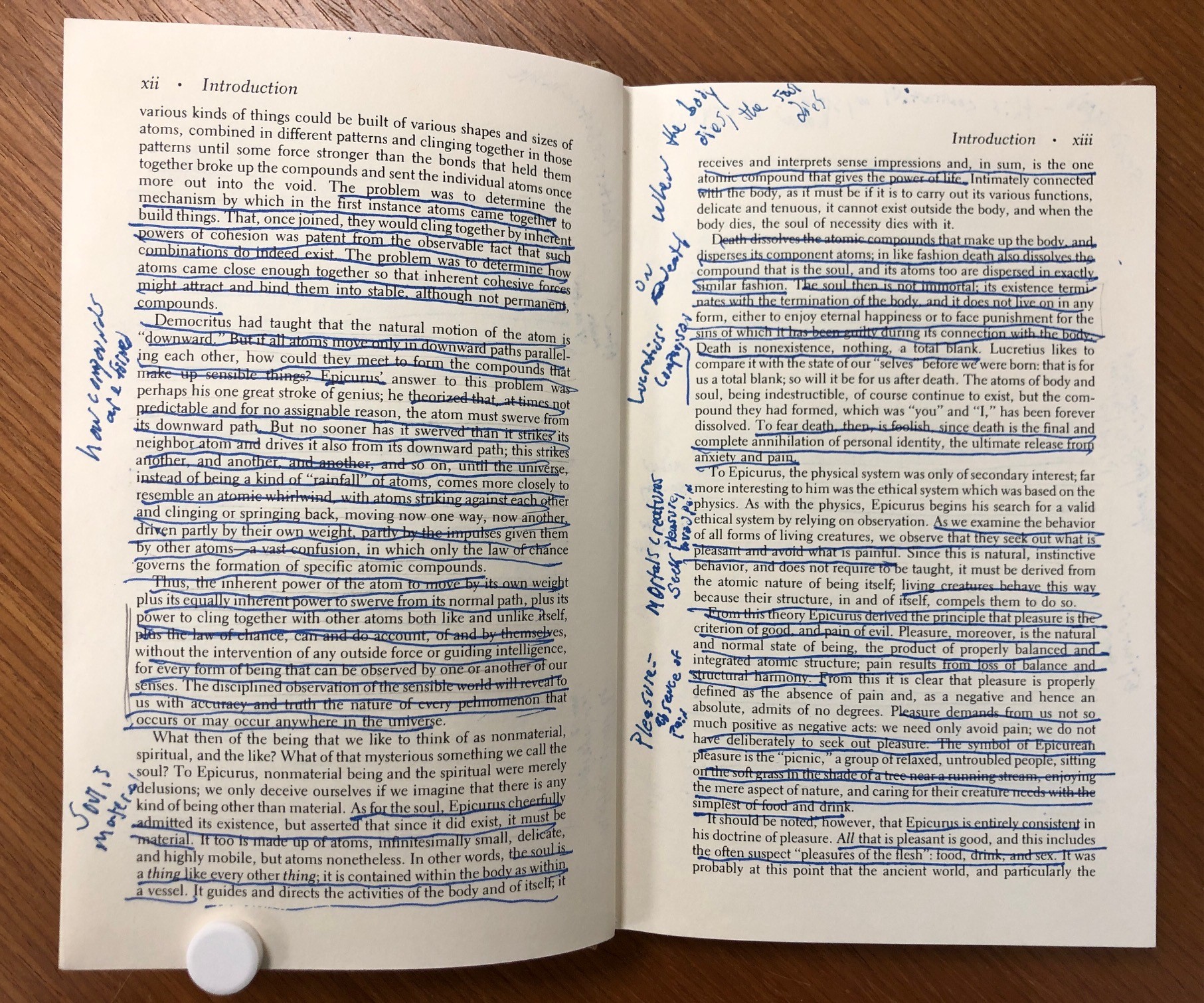
January is the Schrödinger’s Cat of months. It goes by quickly, and drags on and on.
Happy New Year to all our followers!


January is the Schrödinger’s Cat of months. It goes by quickly, and drags on and on.
Happy New Year to all our followers!
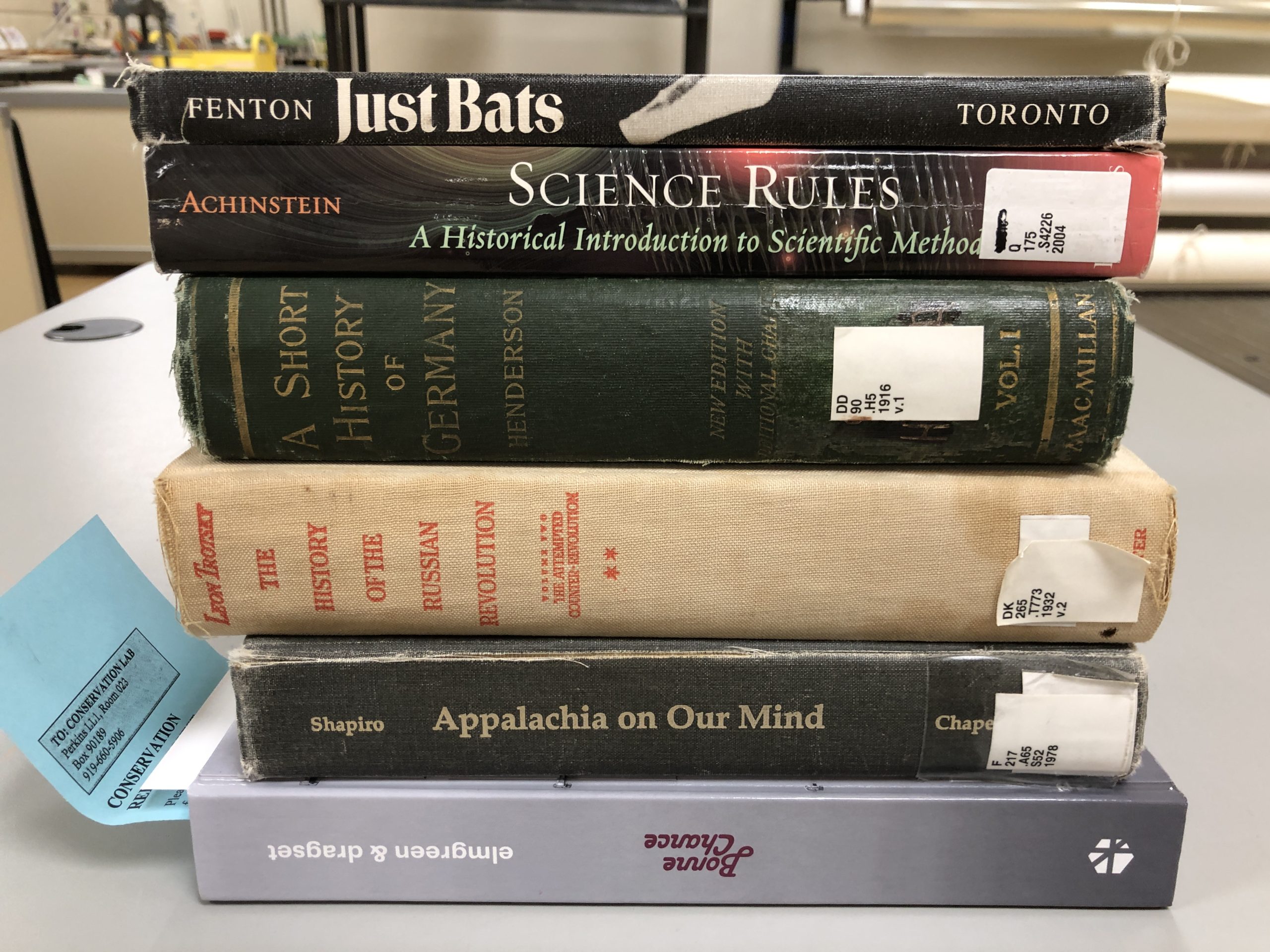
We see a lot of underlining, highlighting, and writing in our returned library materials. Most times it is sad to see defaced books that make the content hard to read for the next patron. Sometimes it makes you smile.
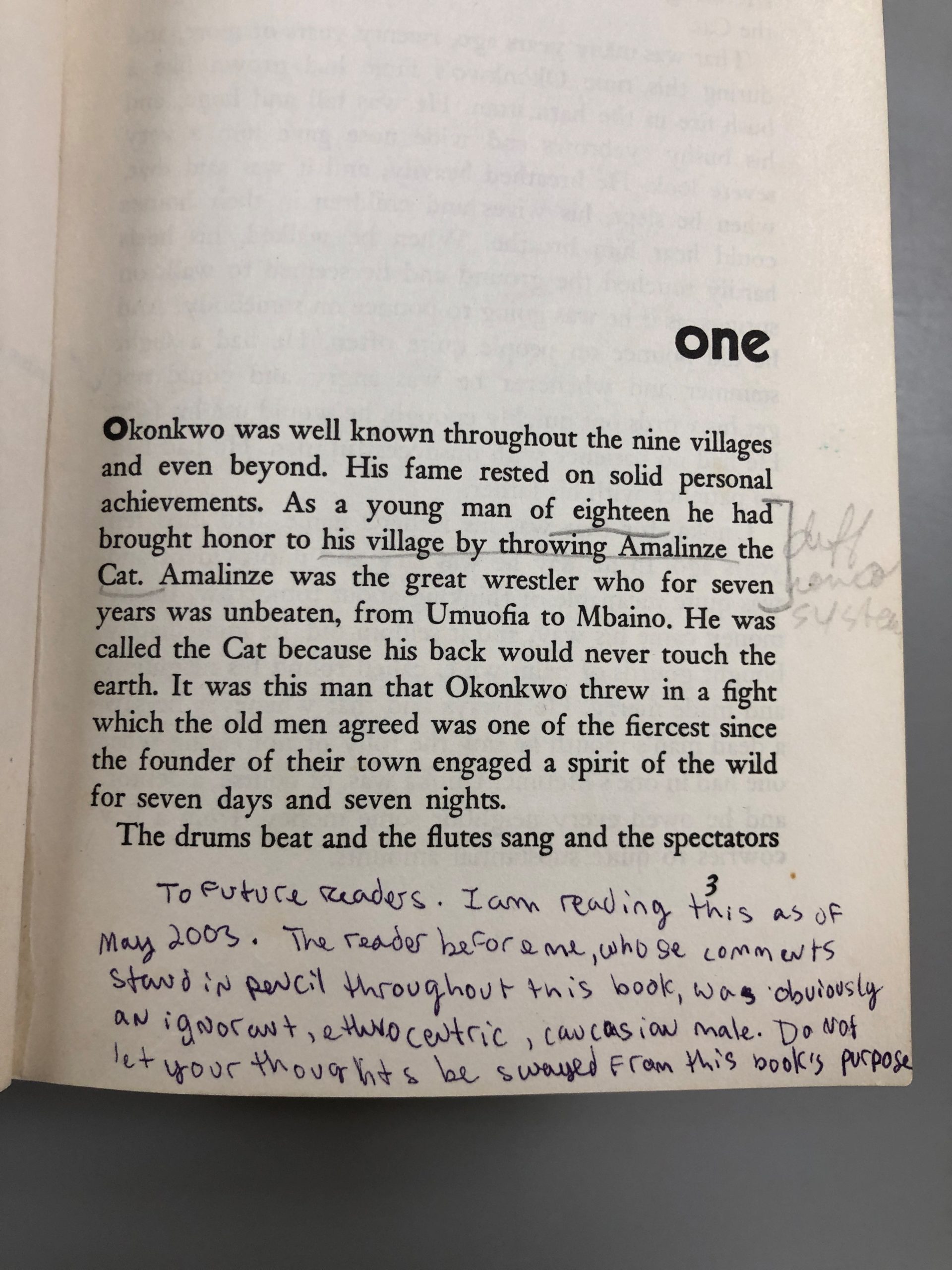
Duke University Libraries is seeking applicants for Senior Conservation Technician in the Verne and Tanya Roberts Conservation Lab. Come join our team!
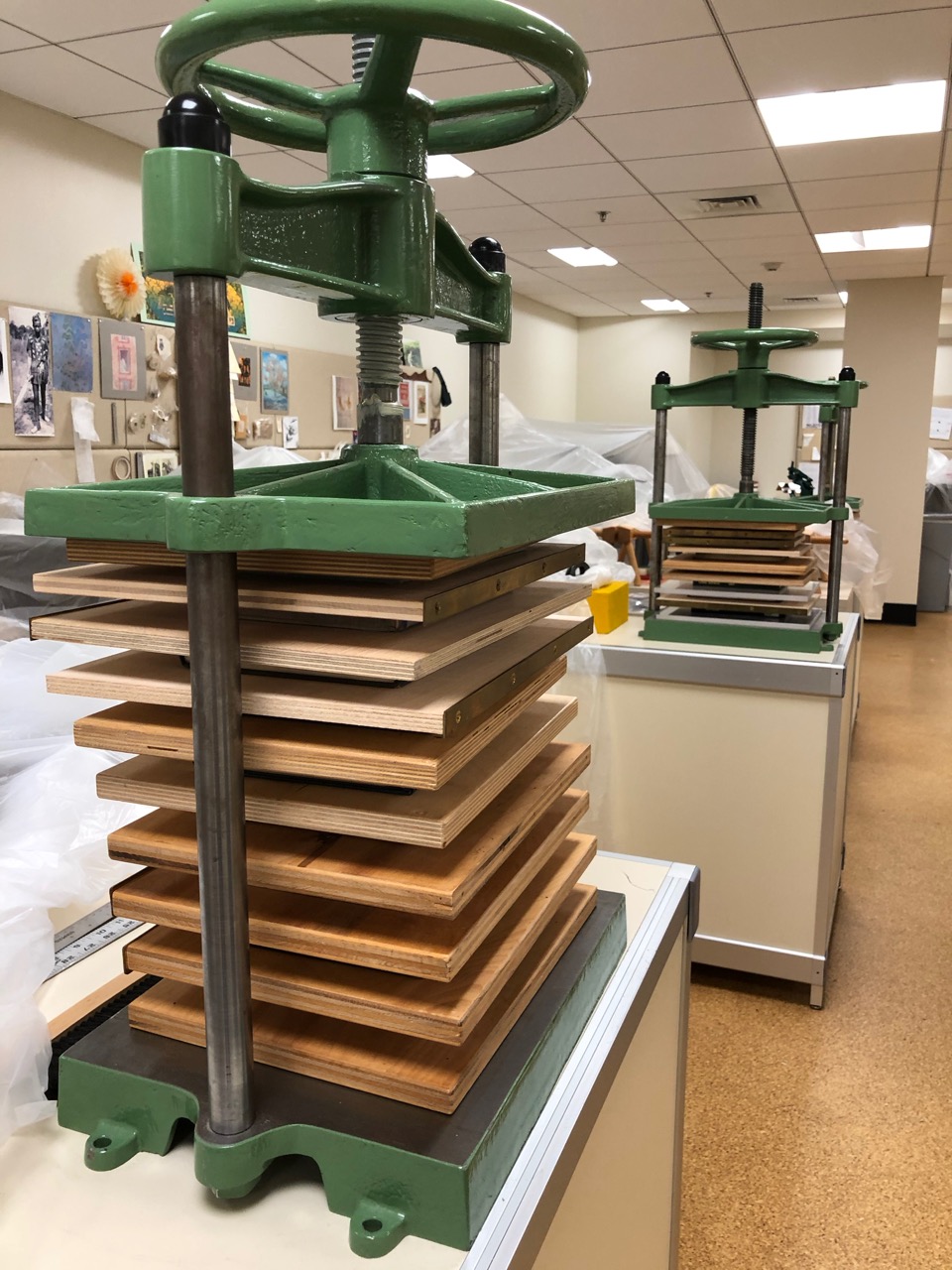
The job announcement outlines further job responsibilities and the application requirements: https://library.duke.edu/about/jobs/srconservationtechnician
Applicants invited for an interview will be expected to present a portfolio of work.
Salary dependent on qualifications and experience; anticipated salary range $50,000-$60,000. Comprehensive benefits package includes 15 days vacation, 14 holidays, 12 days sick leave; health, dental, disability and life insurance and support for professional development and training.
The Duke University Libraries are the center of intellectual life at Duke, one of the most highly ranked private universities in the nation. The William R. Perkins Library, Bostock Library, David M. Rubenstein Rare Book & Manuscript Library, and von der Heyden Pavilion comprise the university’s main library complex, which is joined on East Campus by the Lilly and Music Libraries, and by the Pearse Memorial Library at the Duke Marine Lab. Together with the separately administered libraries serving the schools of Business, Divinity, Law, and Medicine, they comprise one of the country’s top 10 private research library systems. Consistently recognized as a great place to work, we strive to provide an inclusive, safe, and welcoming environment with equitable support for all people.
More information about the Duke Libraries and the Verne and Tanya Roberts Conservation Lab can be found here:
Where Curiosity Leads, the Duke University Libraries Strategic Plan, 2024-2029
Diversity, Equity, and Inclusion at Duke University Libraries
Duke Libraries Conservation Services Department
Located halfway between the Great Smoky Mountains and the beaches of the Atlantic, Durham is home to hundreds of restaurants, more than 40 annual festivals, Duke and North Carolina Central universities, art and science museums, world-class medical facilities, and a rapidly growing, richly diverse population. One of three cities that make up North Carolina’s Research Triangle, Durham is known as a vibrant hub for innovation and technology, as well as an incubator of many successful start-ups. It is consistently ranked among the best places to live, do business, and retire. Learn more at https://durham.duke.edu/.
Duke University consistently ranks among the best employers in the country. Duke offers a comprehensive benefit packages which includes both traditional benefits such as health insurance, leave time and retirement, as well as wide ranging work/life and cultural benefits. Details can be found at: http://www.hr.duke.edu/benefits/duke_benefits.html .
https://library.duke.edu/about/jobs/srconservationtechnician
General Collections conservation is like a box of chocolates, you never know what you are going to get from Circulation. Lucky for us, this gentle reader only got through a couple chapters, not the whole text. We’ll take this over highlighting or underlining any day.
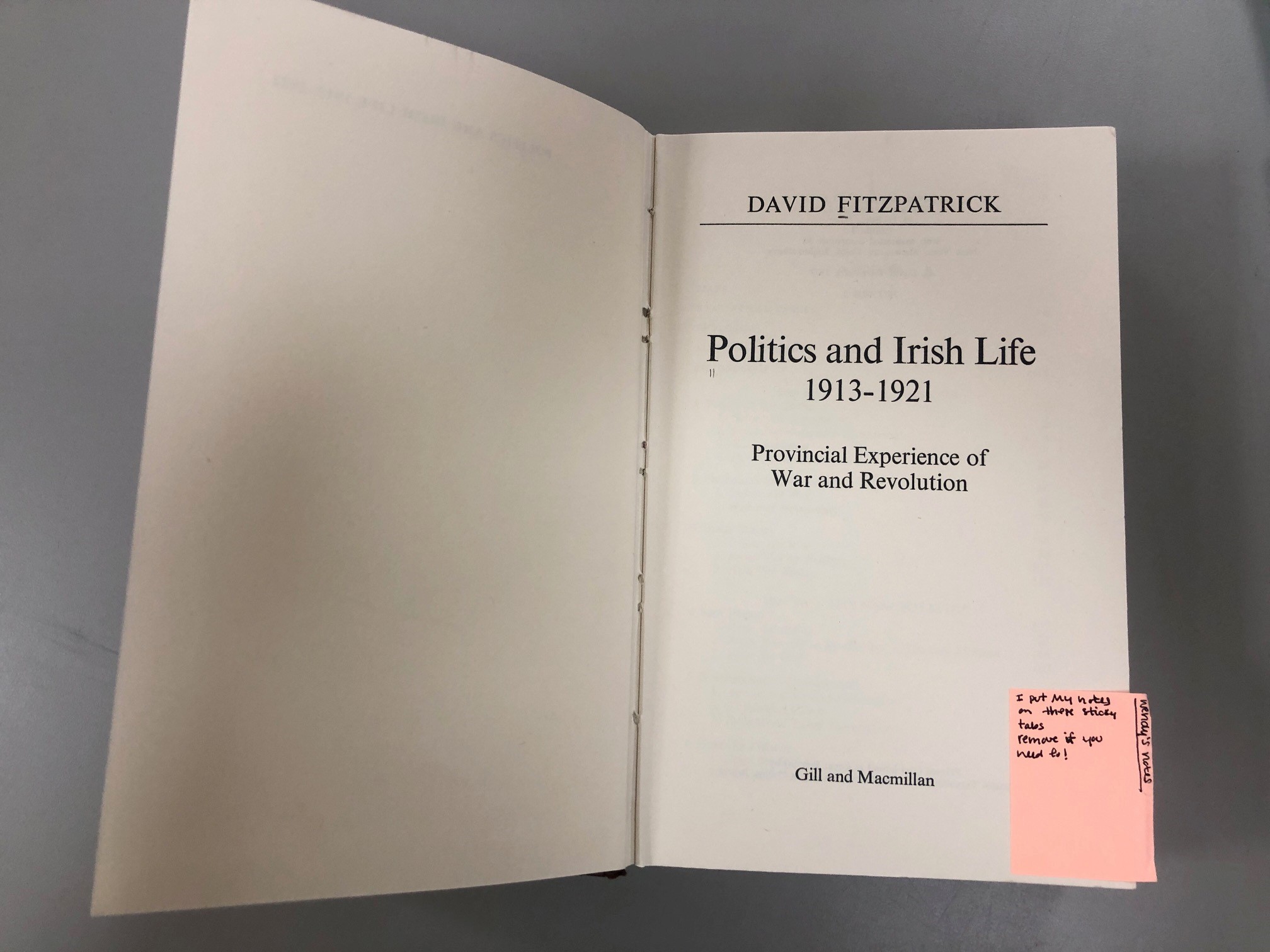
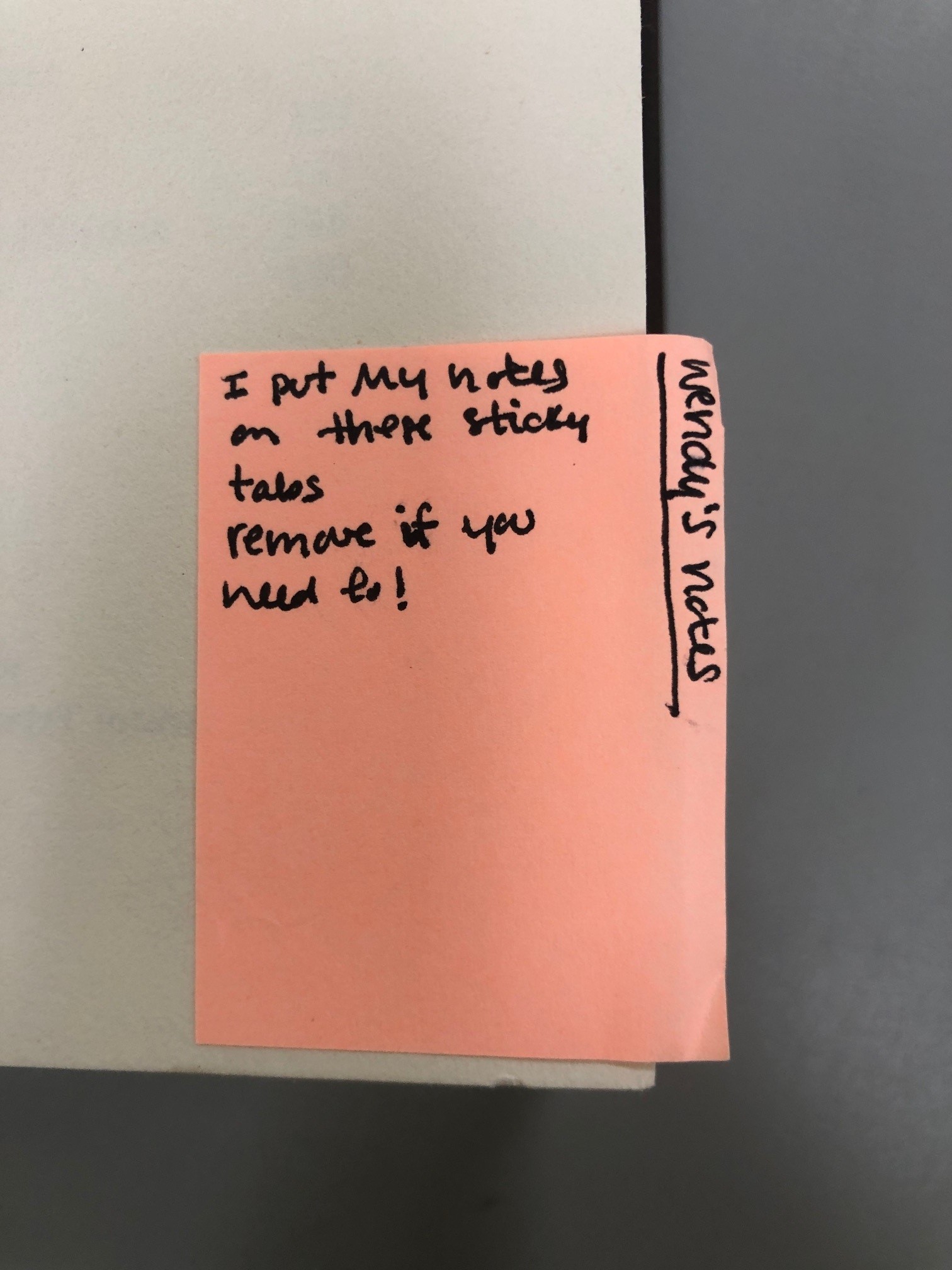
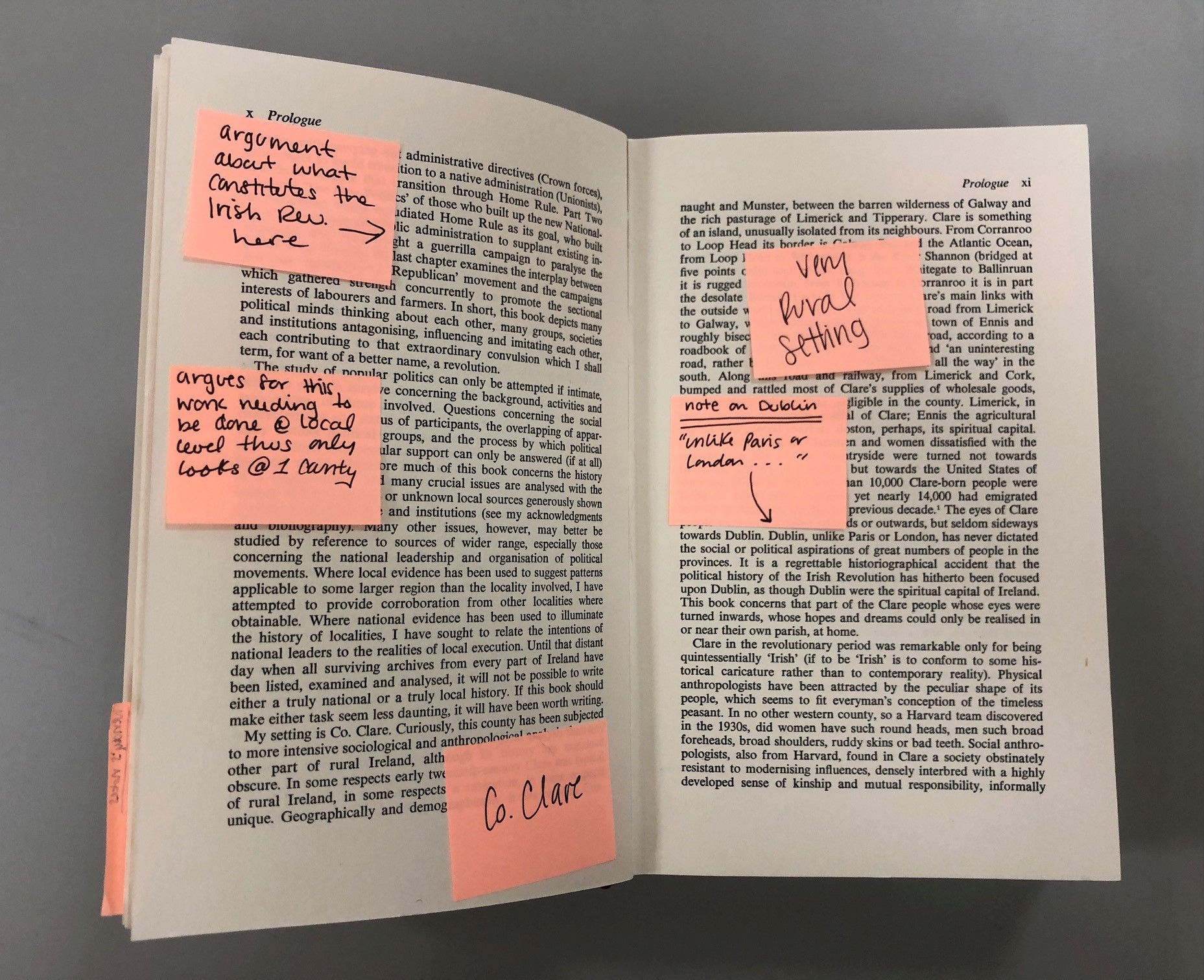
I inventory our disaster supplies and make sure people know where to find them every year during Preservation Week and May Day. We have plenty of supplies and equipment in the main library where Conservation is located. A couple years ago we expanded our supplies to include branch libraries and our Collections Services building.
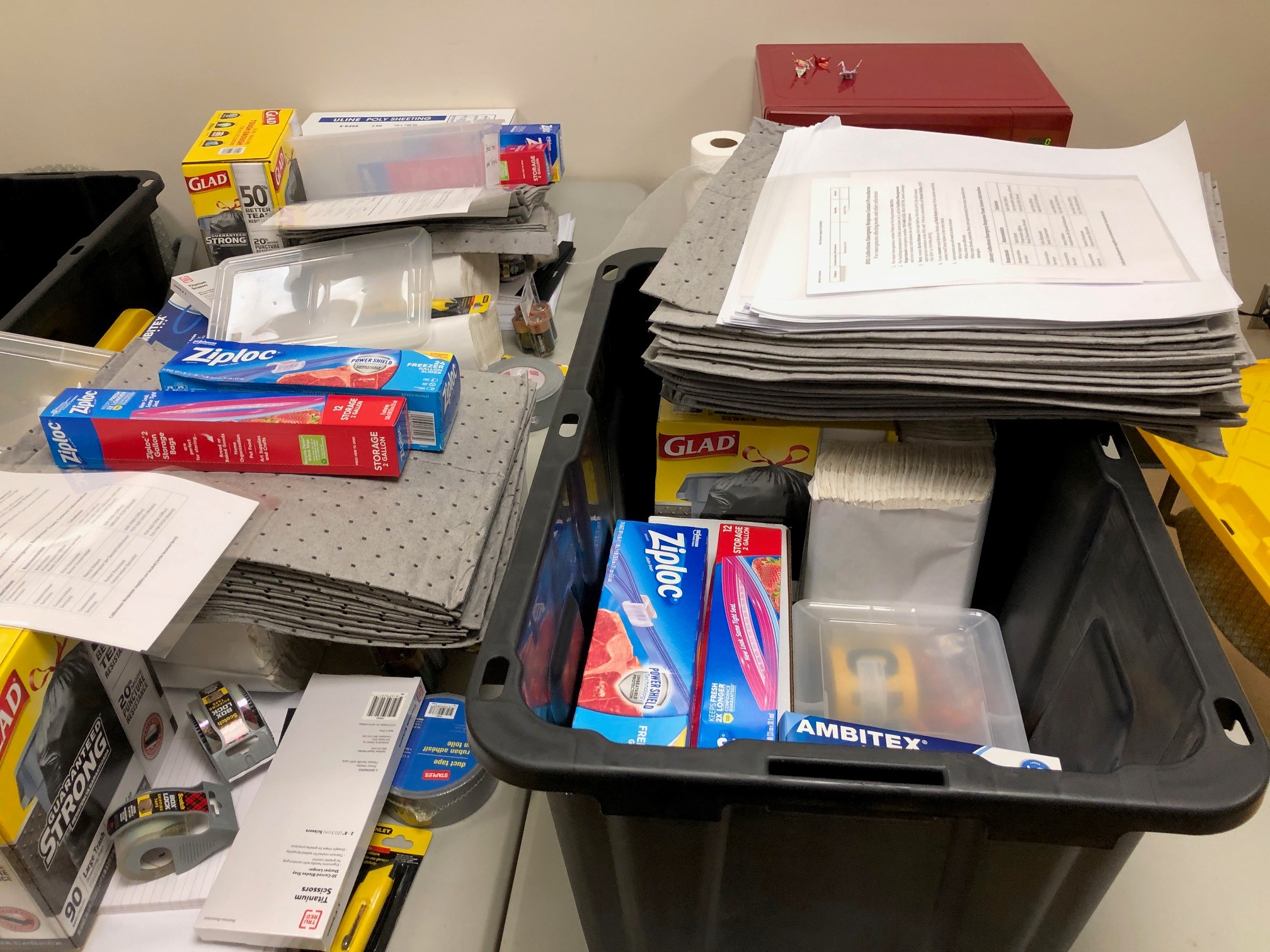
While there are many disaster supply lists available online (see below), we found that for our locations we needed customized supply totes. Our totes are stocked with the basics that are needed to respond to small incidents, or start a response while staff await the disaster team’s arrival. Here is a screenshot of our tote contents. I will probably tweak this list going forward, but these totes have proved useful already by all of our branches.

Our supply cabinet in Collections Services contains the same supplies, plus it has some handy tools and supplies for Conservation when we are on site doing some minor repairs.
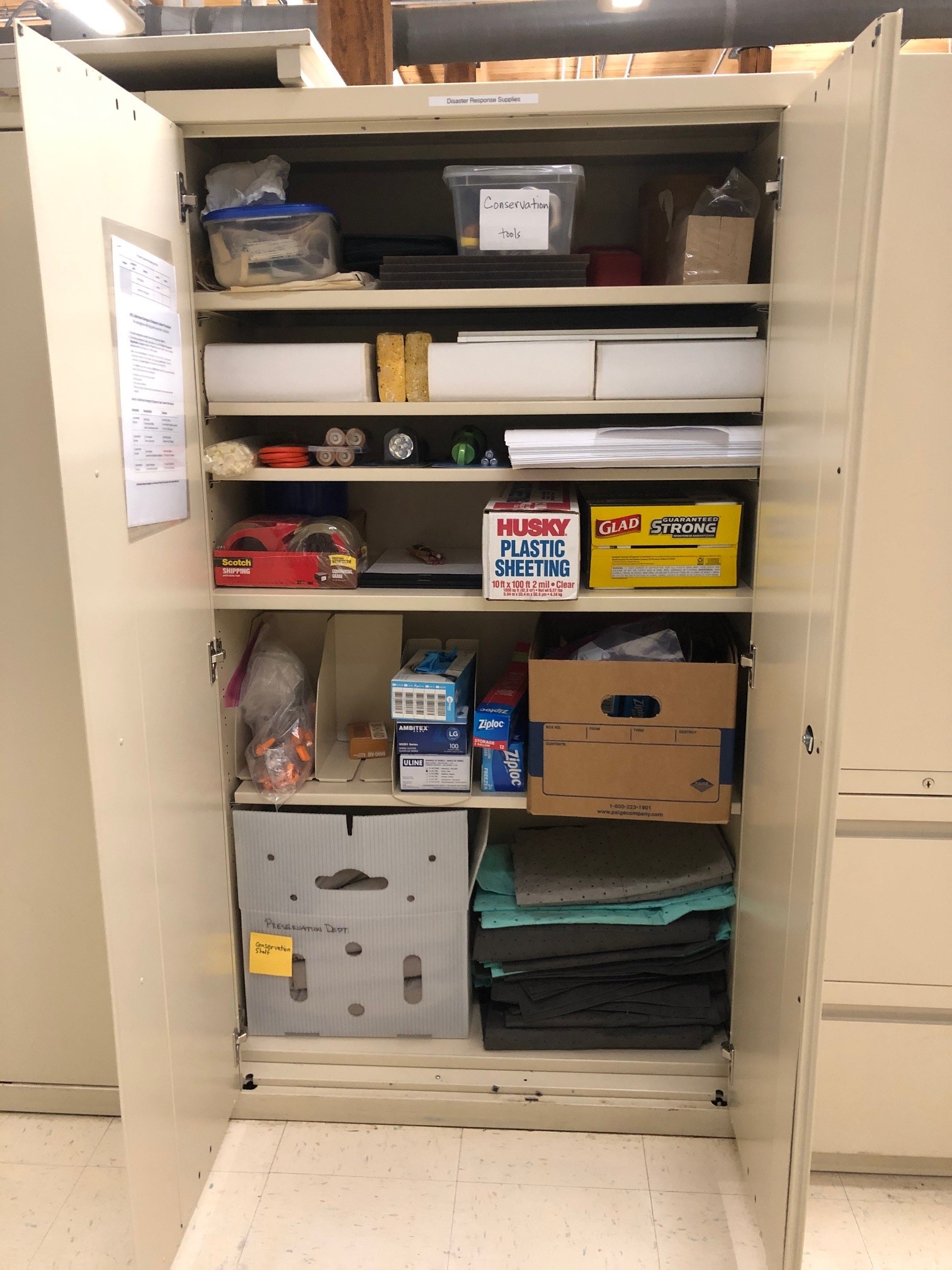
There are a lot of resources out there that will advise you on what In our experience we have found that every site has different needs for their disaster kits. These are great places to start your supply list. If you are in a small institution, these can be a quick and easy way to get some supplies in place, then you can add/subtract supplies later to make the kits your own.
AIC Collections Emergency Kits This presentation from 2021 has a variety of handouts.
Harvard Library Recommended Emergency Supplies An extensive list to get you started.
NEDCC Preservation 101 Disaster Supply Checklist A handy printable checklist.
University Products Disaster Recovery Kit An off-the-shelf option with some basic supplies.
Gaylord Be Ready Recovery Kit Another ready-made option.
What’s in your disaster supply kit?
 It’s May Day, the annual celebration that reminds you to spend a few minutes to make sure your cultural heritage organization is ready when a disaster hits. Be it small or large, any kind of emergency in your institution needs a plan.
It’s May Day, the annual celebration that reminds you to spend a few minutes to make sure your cultural heritage organization is ready when a disaster hits. Be it small or large, any kind of emergency in your institution needs a plan.
Do one thing today to make sure you are ready. That can be making sure the phone numbers and URL’s in your plan are updated; you can look at your disaster kit and make sure your have plenty of supplies on hand; or make sure everyone in your organization knows where they can find a copy of the plan.
A 2014 follow up survey by IMLS indicated that only 42% of collecting institutions had a disaster plan. While that was almost double from the initial Heritage Health Survey in 2004, that is still an alarming number. It may take more than 15 minutes to write a plan. There are many templates out there, and once you have that draft the subsequent updates are easy.
The Pocket Response Plan (TM) PREP (TM) templates are one of the easiest plans to adopt. These are customizable templates. We have a phone tree on one side, and we wrote First Steps for staff who will be first on the scene. This plan folds down into a credit card-sized plan that can fit into a small envelope or your wallet. Handy especially when cell phone towers are out due to storms.
The Field Guide to Emergency Response is a handy spiral-bound book that can walk you through creating a disaster plan. This is a great option for smaller organizations, or for people who like a portable paper option for your plan.
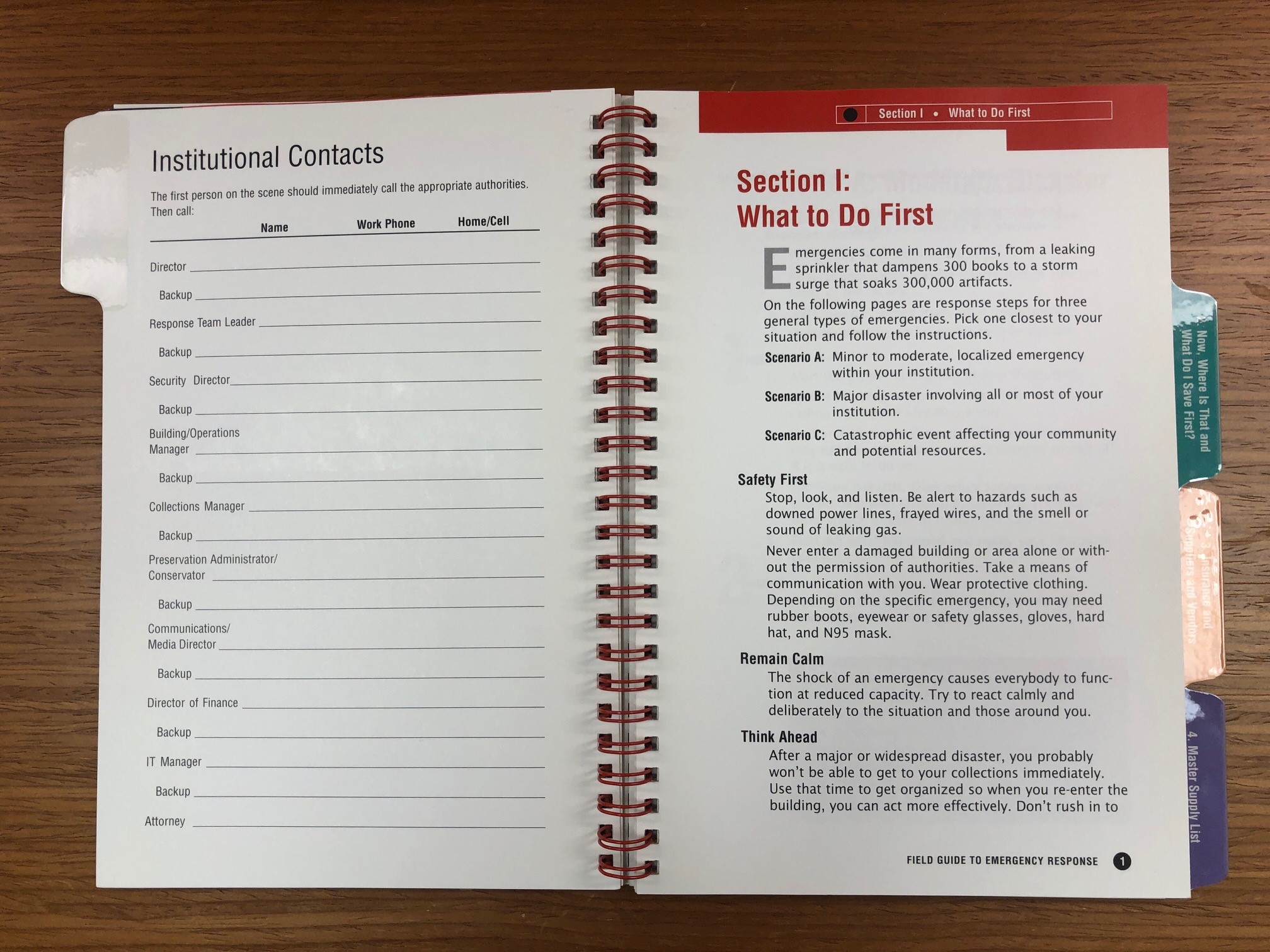
The Risk Evaluation and Planning Program (REPP) is a series of self-study tools. Originally developed by Heritage Preservation with support from an IMLS grant, the project helps you identify your institution’s risks, helps you prioritize risks, and provides many checklists and worksheets. It requires some time to go through the entire set of worksheets, but you will know a lot about your building and risk factors at the end.
For Preservation Week 2024, Duke University Libraries will host a virtual panel discussion about Public Digital Collections of Conservation Treatment Documentation on Thursday May 2 at 11 am EDT. Conservation representatives from four institutions (The British Museum, The Preservation Lab (Cincinnati, Ohio), Duke University Libraries, and Stanford Libraries) will share their experiences in building and sharing their institutions’ digital collections of conservation treatment documentation. Panelists will introduce their collections and discuss topics such as digital preservation of treatment records, metadata creation, linking to catalog records and finding aids, and potential privacy and copyright issues.
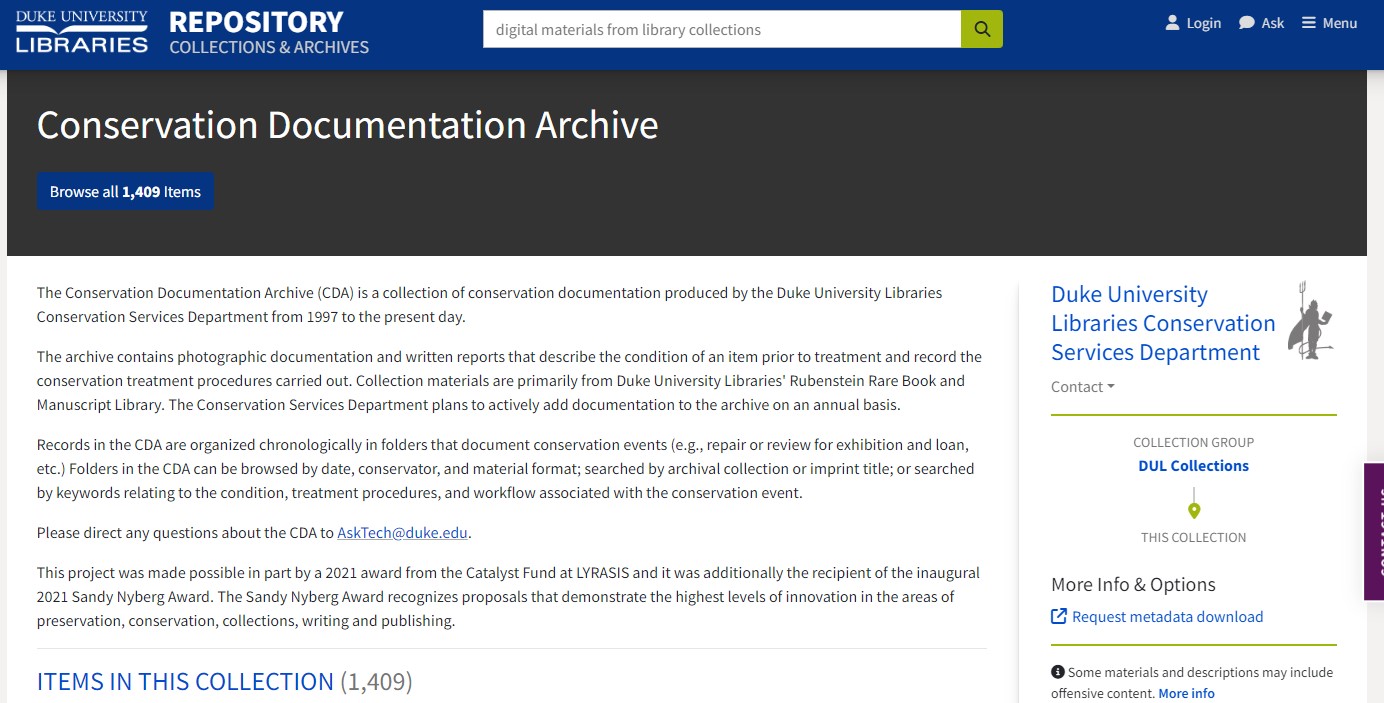
Cost is free but registration is required
Thursday, May 2, 2024
11:00 a.m. to 12:30 pm EDT (Starts at 10:00 Central, 8 am Pacific Daylight Time, 4 pm British Summer Time)
The panel will be recorded and the video will be shared with registered attendees upon request.
Use this link to register for the Zoom:
https://duke.zoom.us/meeting/register/tJ0ocOipqD4sEtNIKDJnrtY_5Q6886vPK-gw#/registration
Louisa Burden, Head of Conservation, British Museum
Ashleigh Ferguson Schieszer, Book and Paper Conservator, Co-Lab Manager, (she/her)
Erin Hammeke, Senior Conservator for Special Collections, Duke University Libraries (she/they)
Ryan Lieu, Conservation Operations Coordinator, Stanford Libraries (he/him)
British Museum
Preservation Lab
Duke University Libraries
Stanford Libraries
We recently attended a webinar on the binding, preservation, and care of music scores held jointly by the ALA/Core Preservation Administrators Interest Group and the Music Library Association Preservation Committee. Yes, we talked for over an hour about binding scores, and it was amazing!
If you are interested in viewing the recording, you can access it through the University of Maryland digital repository. During the presentation, we mentioned that we routinely sew spiral-bound items into Archival Products Spine Wrap (TM) pamphlet binders.
People asked if we had instructions, which of course has been on my to-do list for a while. So I created this short video demonstrating how we sew these. There is no narration, only ambient noise. Some day I will write up the instructions, but until then, hopefully you can use this video and the quick explanation below to see our method. Once you do three or four, you get the hang of it and it goes really quickly. At the 05:40 mark you can see the “shake test.” These are firmly attached as long as your sewing is tight, and you have the full function of the spiral.
With an awl, punch sewing stations. Each station consists of two holes, one on either side of a wire. 3-5 stations is adequate unless your pamphlet is very large.
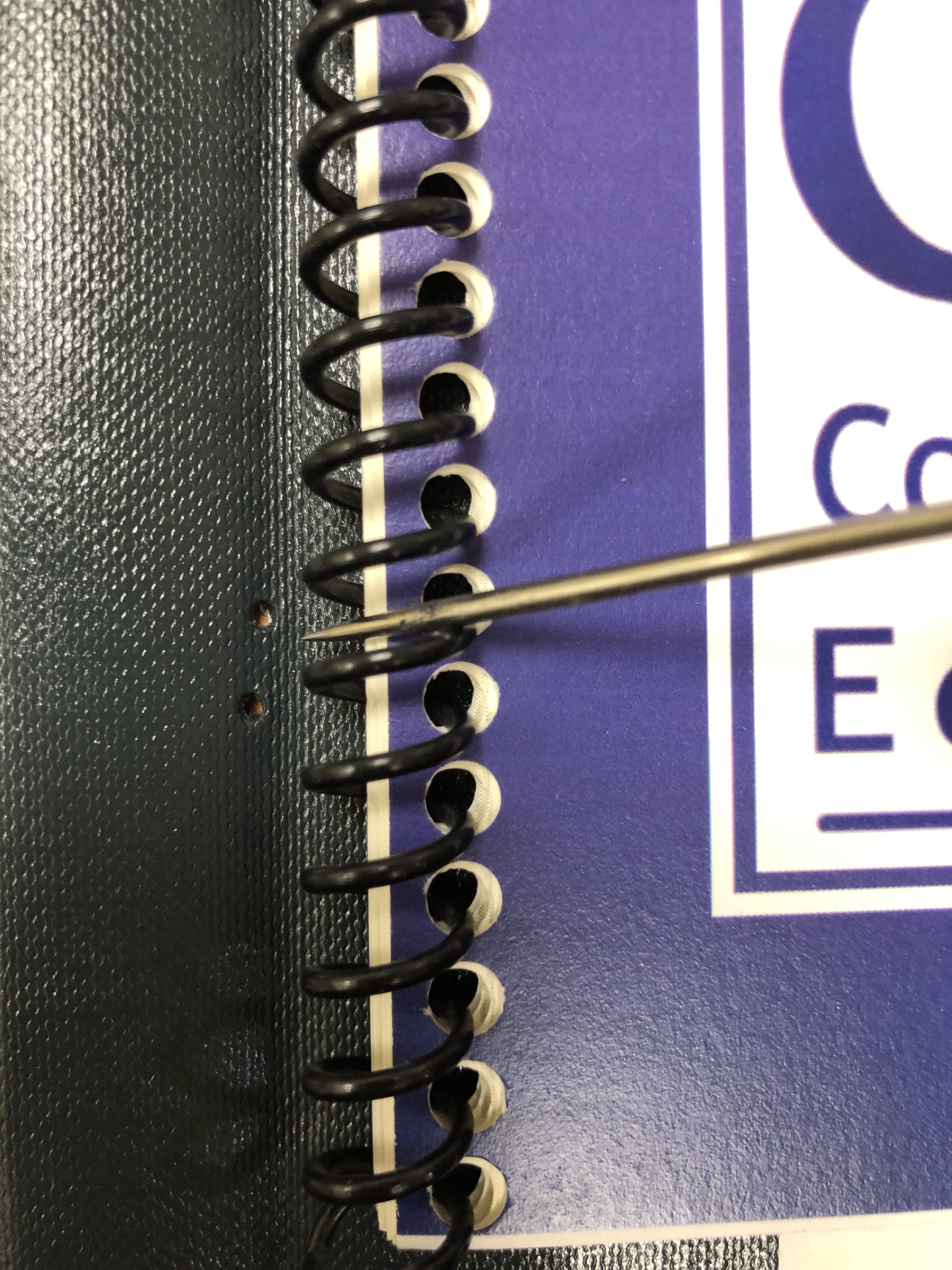
Starting at the top, go in through the back and through a wire loop. Go out and back in again, wrapping the wire twice.
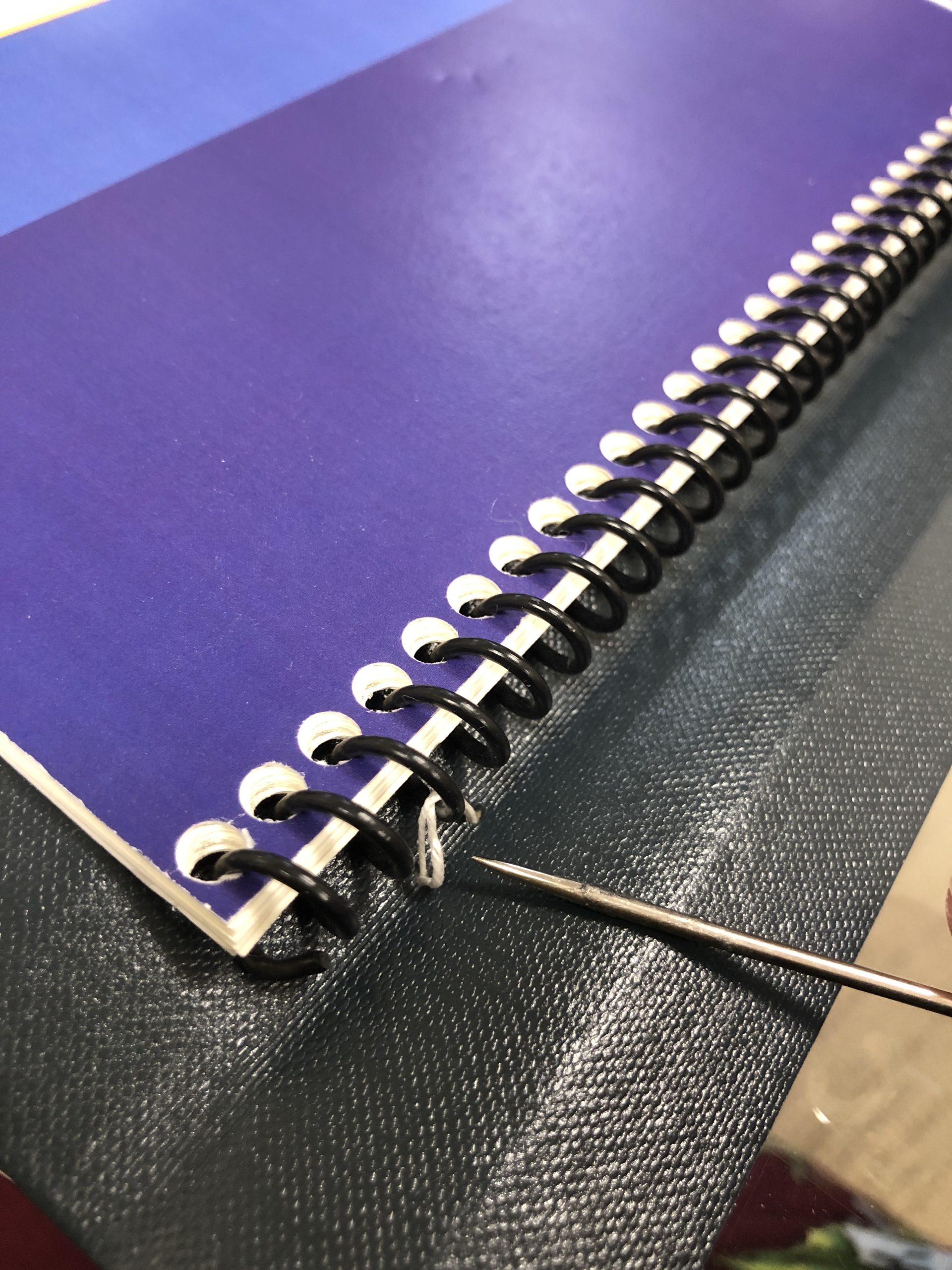
Pull tight, and tie a square knot. Go to the next sewing station and do the same, wrapping the wire twice. Loop the needle under the thread at the spine to create leverage when tightening, and continue along until the end.
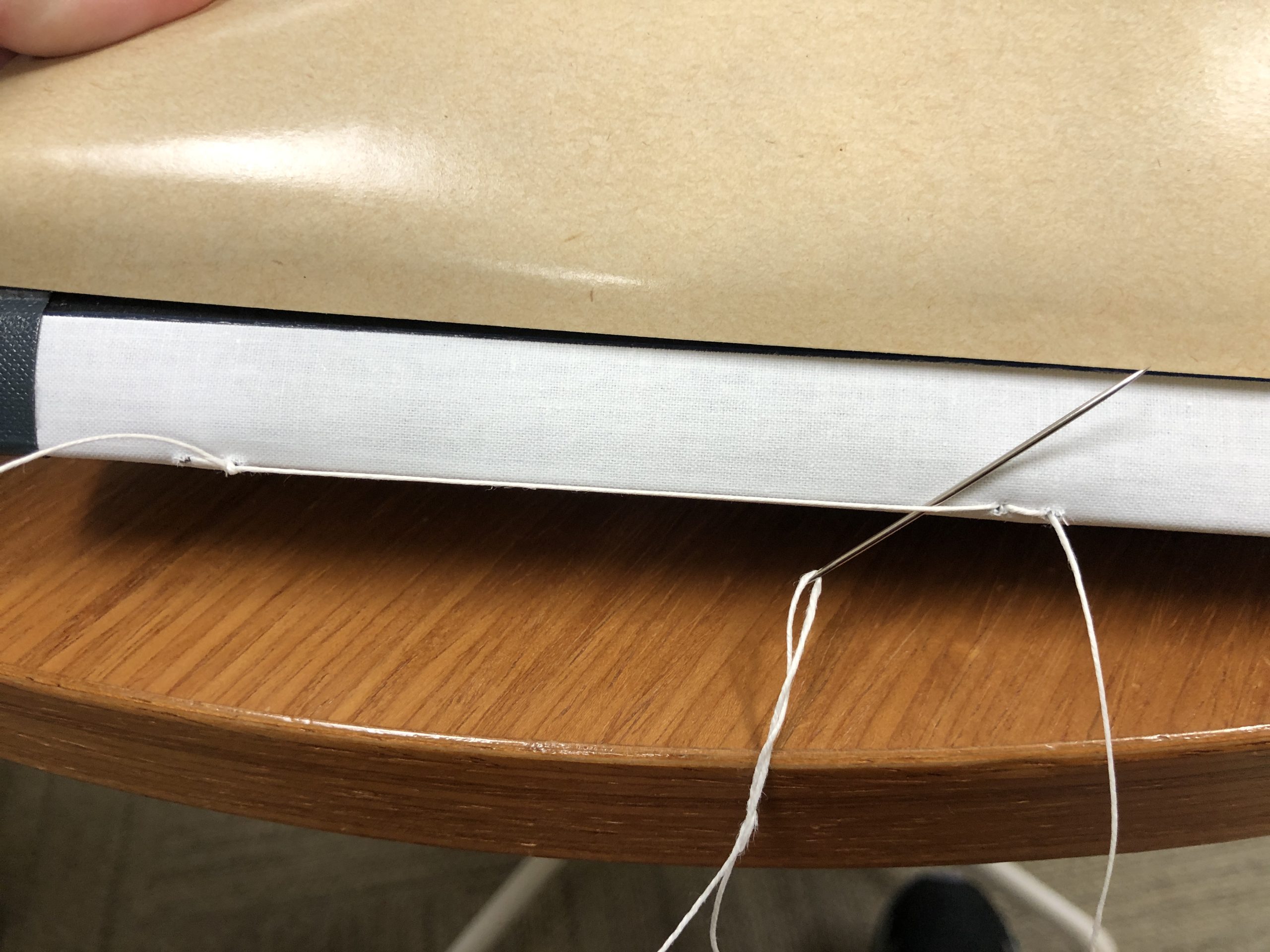
At the end, once you have looped the wire twice and tightened the thread, loop the needle under the thread above and tie a square knot.
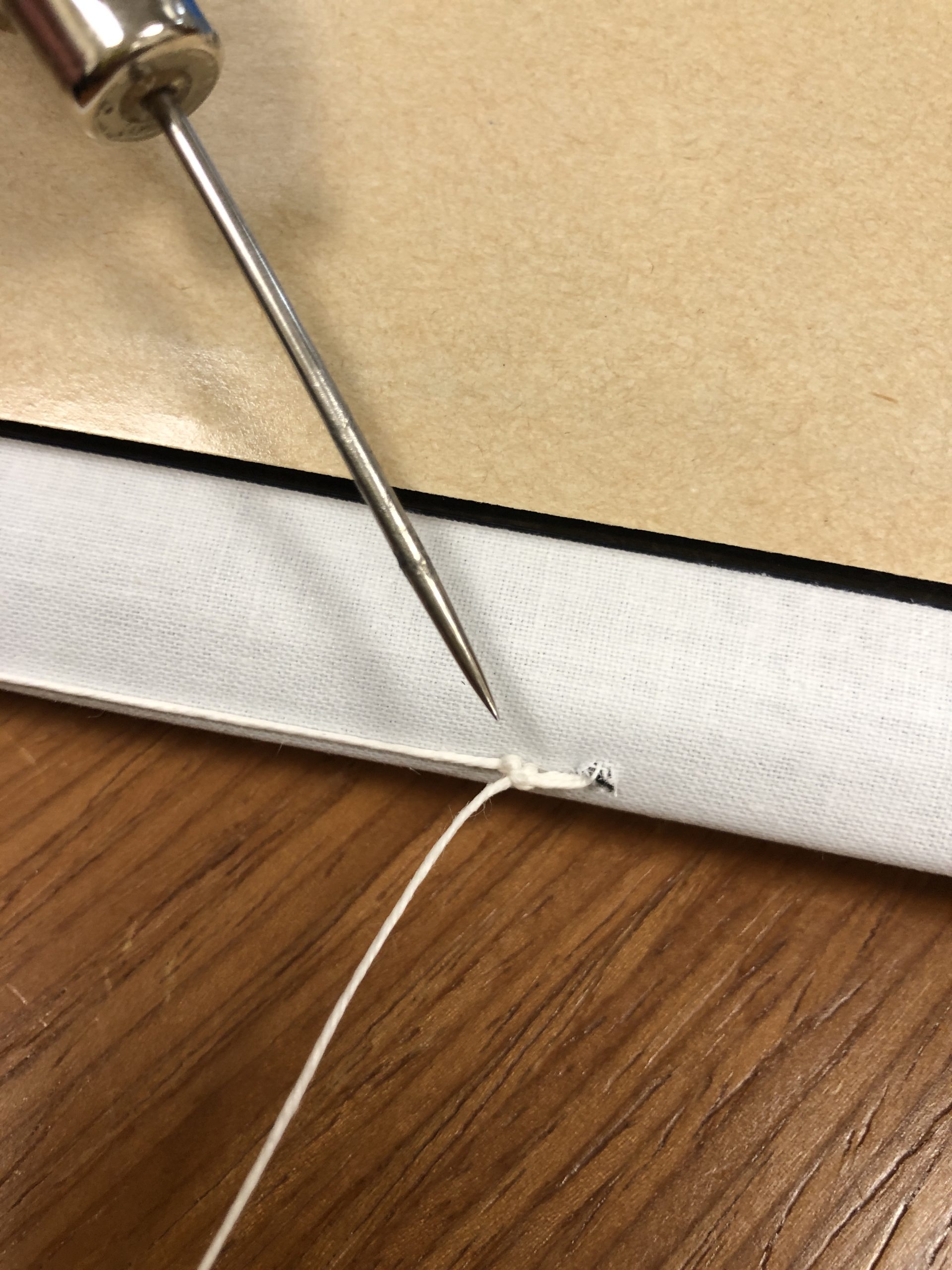
Finish the pamphlet by removing the paper and wrapping the spine around neatly. Remove the protective blue film. Voila!
Last week, Crozier Fine Arts was on site to de-install, crate, and move the art and artifacts from the Lilly Library Thomas Room in preparation of the start of renovation this summer. It was incredible to watch this team get all of the work off the walls and into crates in five days.
The custom crates were made off site and shipped to the library. First up was crating the pair of marble lions that stood at the south door of the Thomas Room.
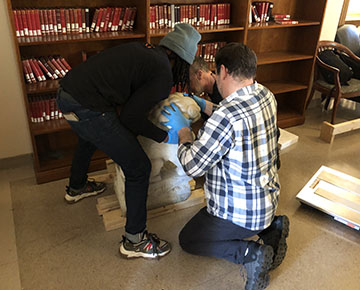

The statue of Benjamin Duke was estimated to weigh about 450 pounds. It took a lot of time, and careful planning, to get it off its platform and into a crate.


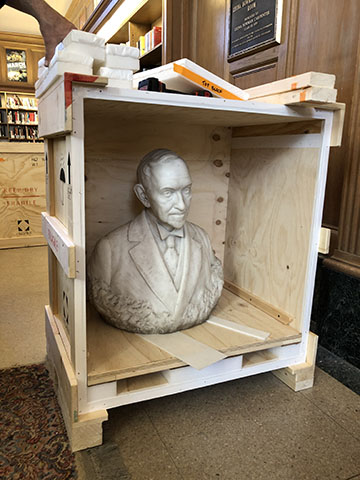
We have a lot more photos to share from the week. Until we get them posted, please see these other excellent recaps of the move of the art and artifacts from the Thomas Room. You can read more about the upcoming Lilly Closure and Renovation here.